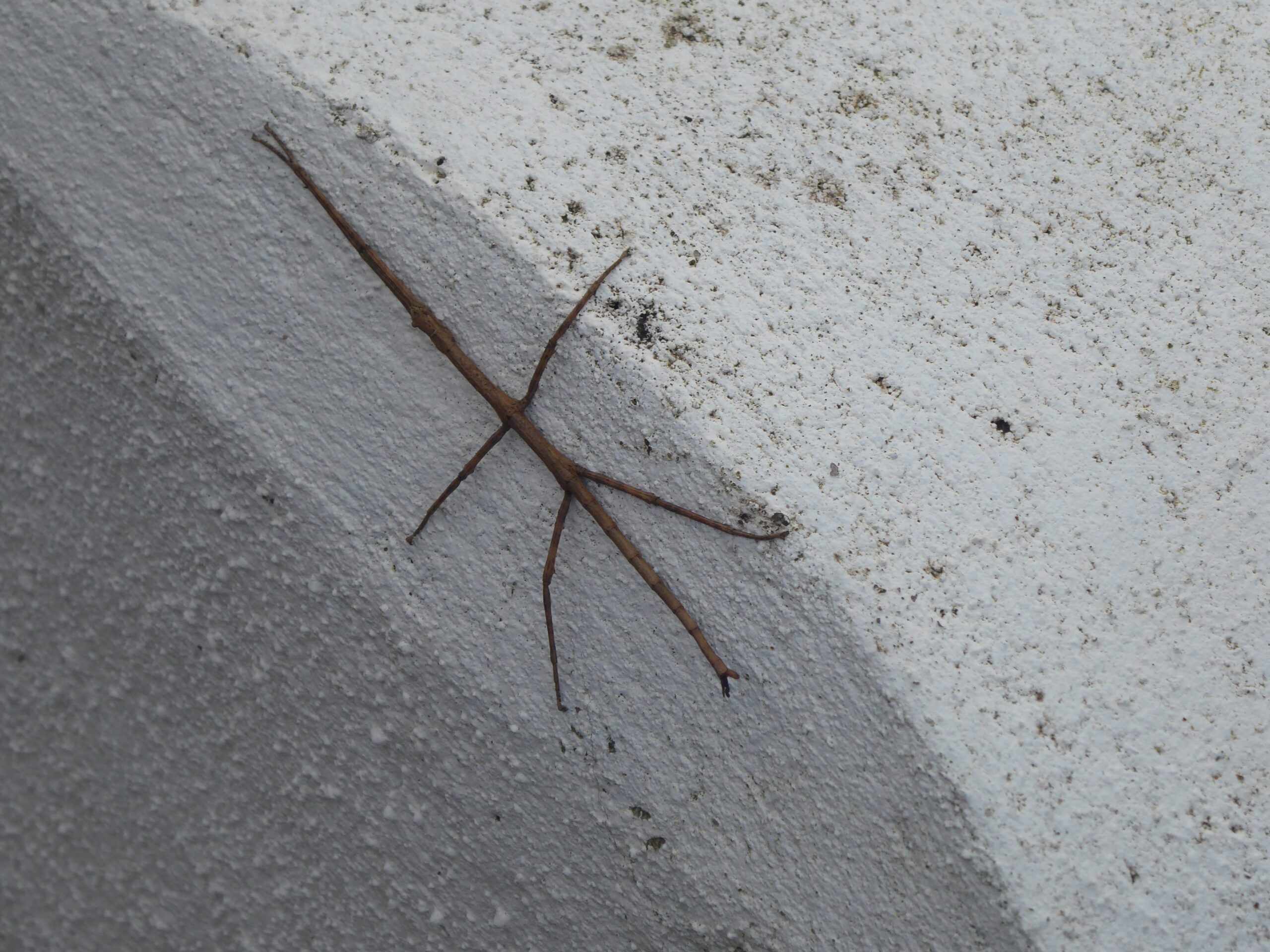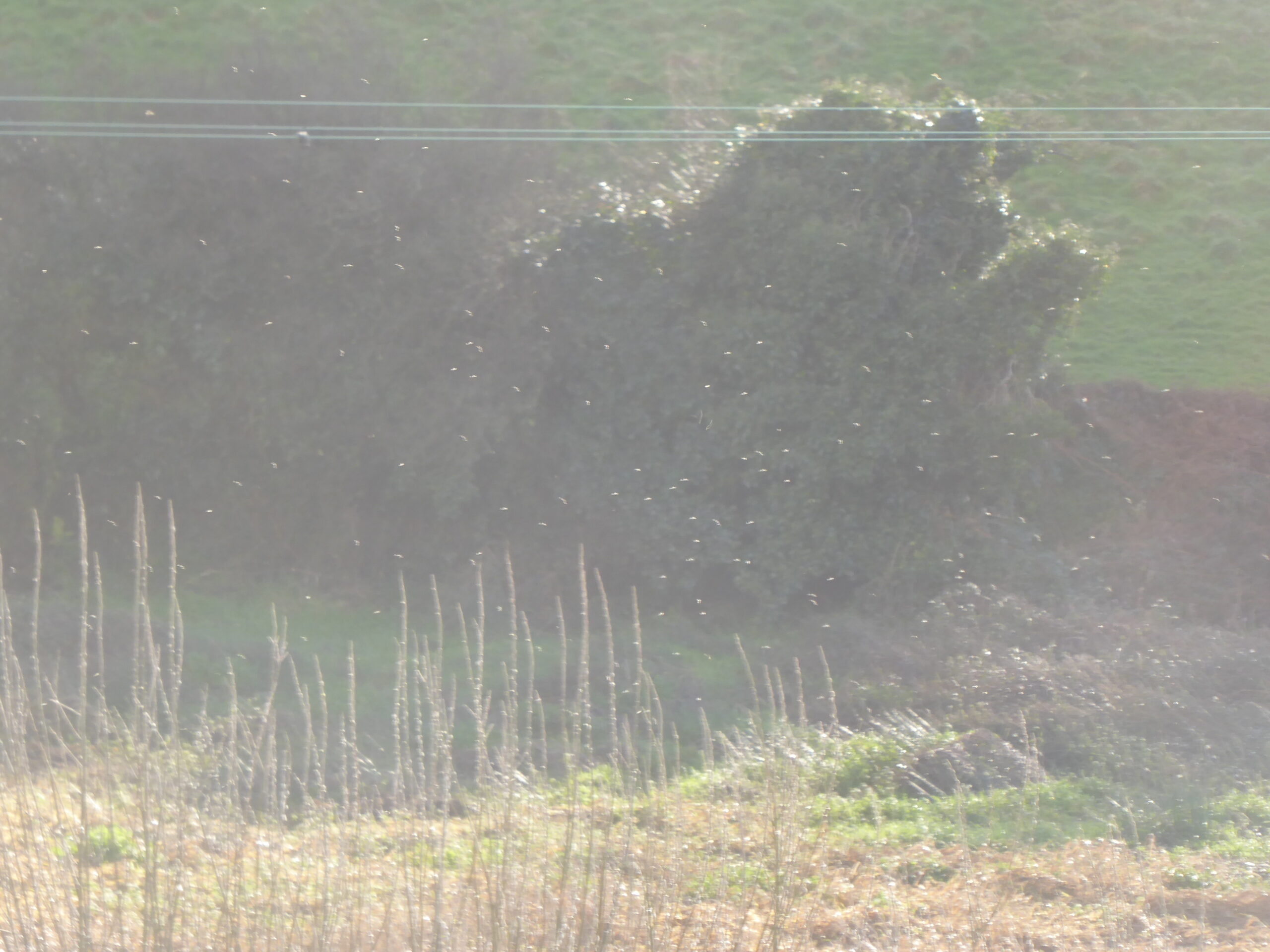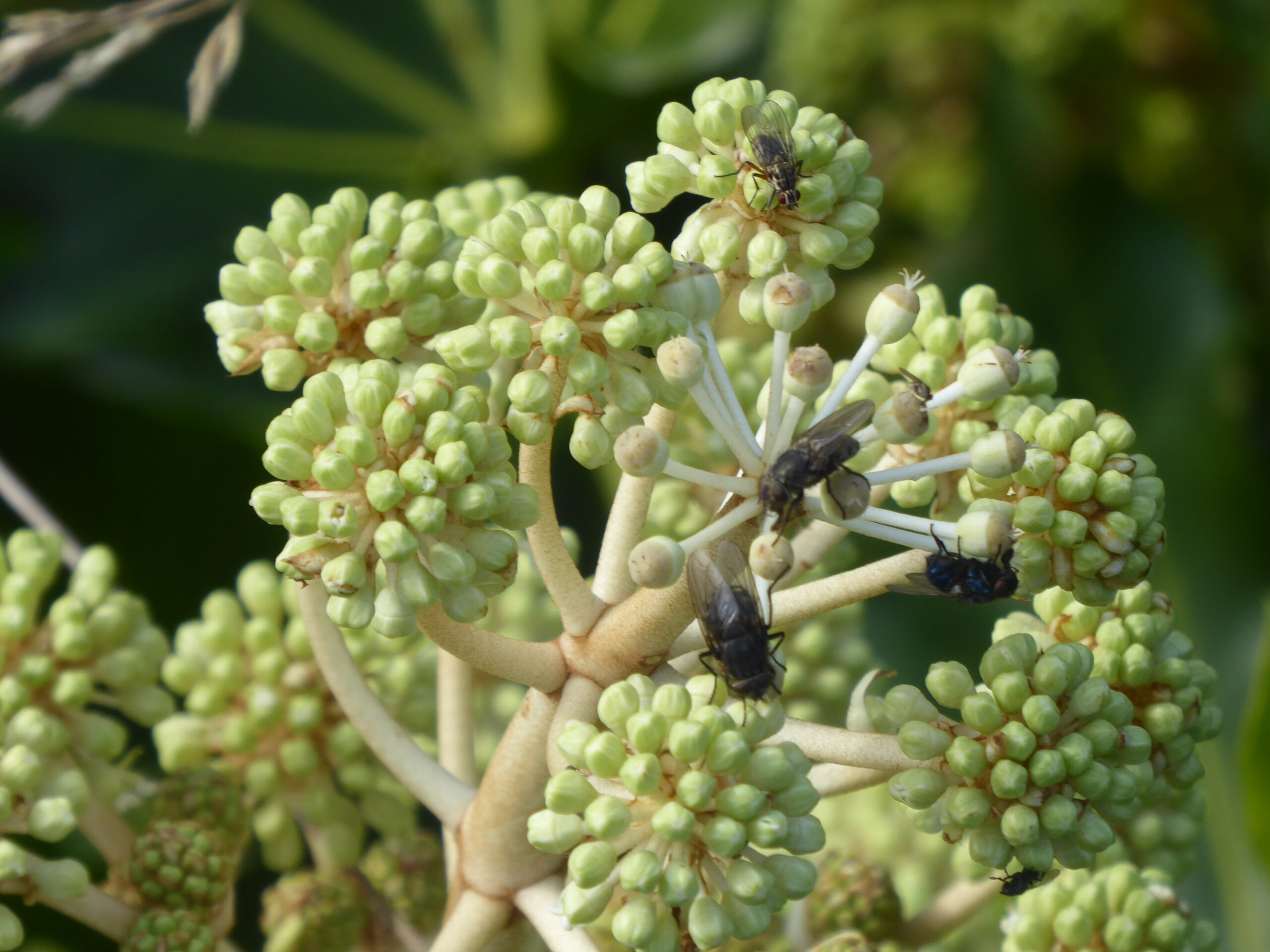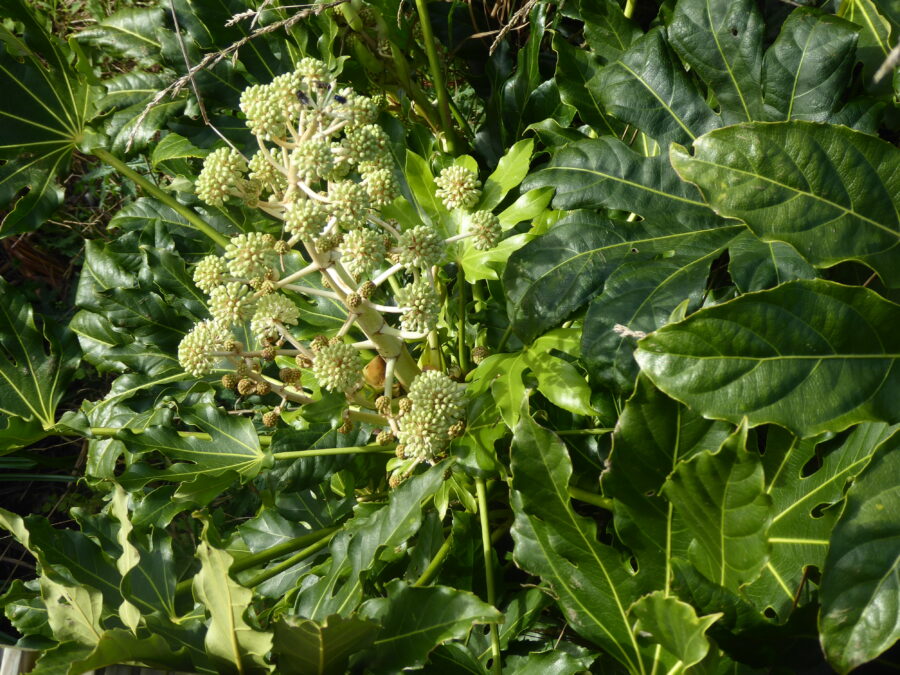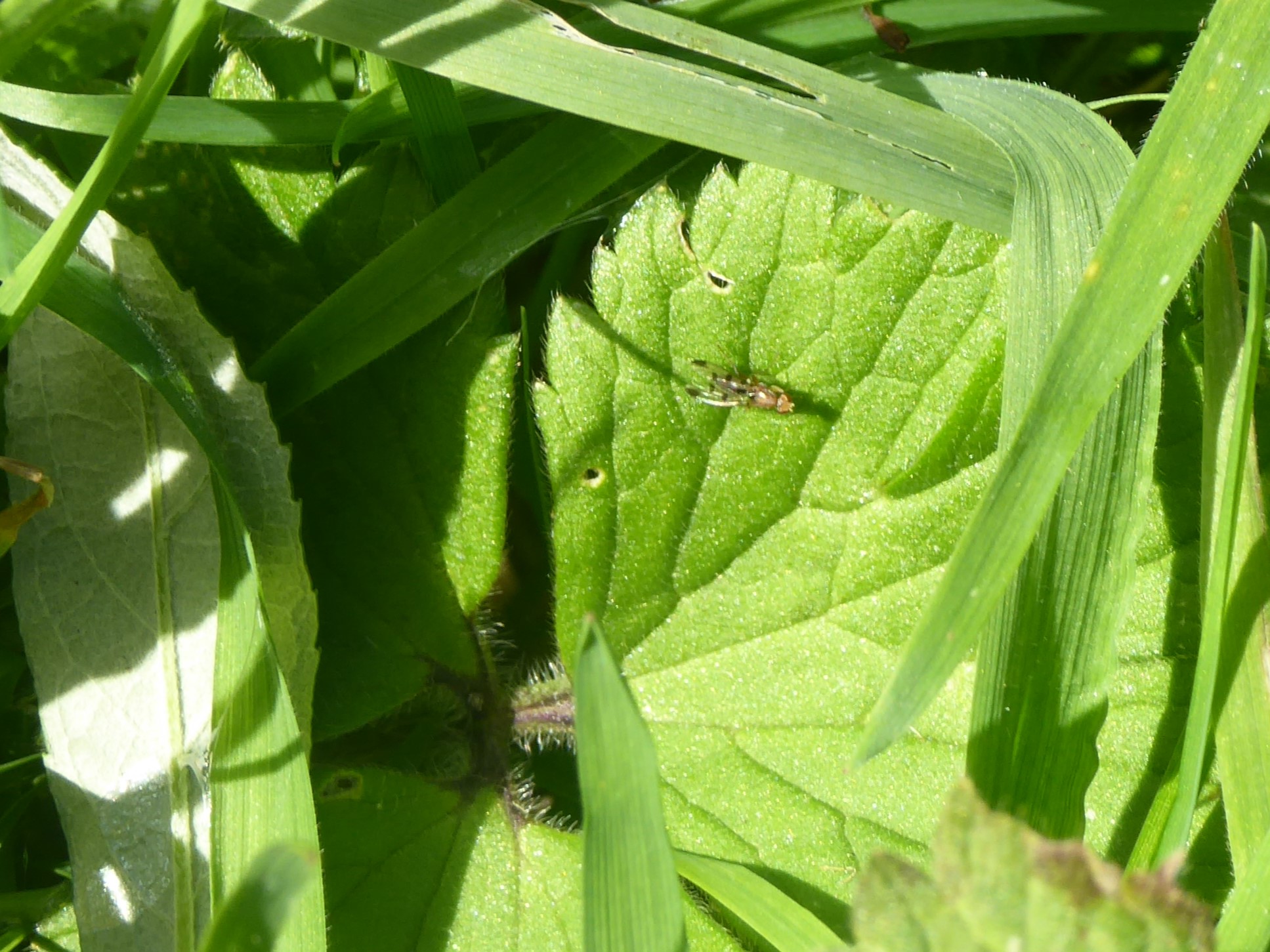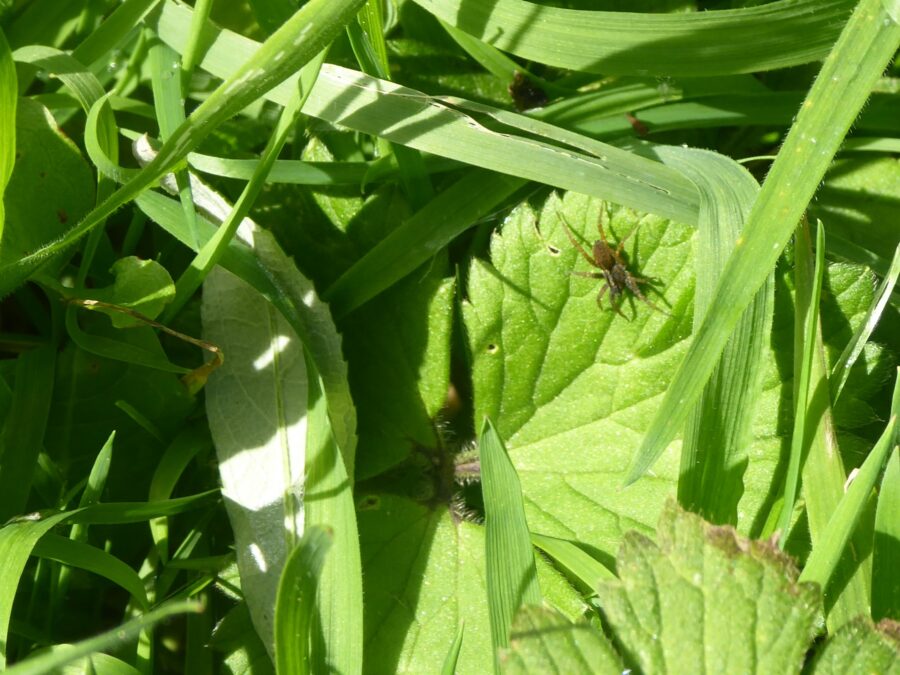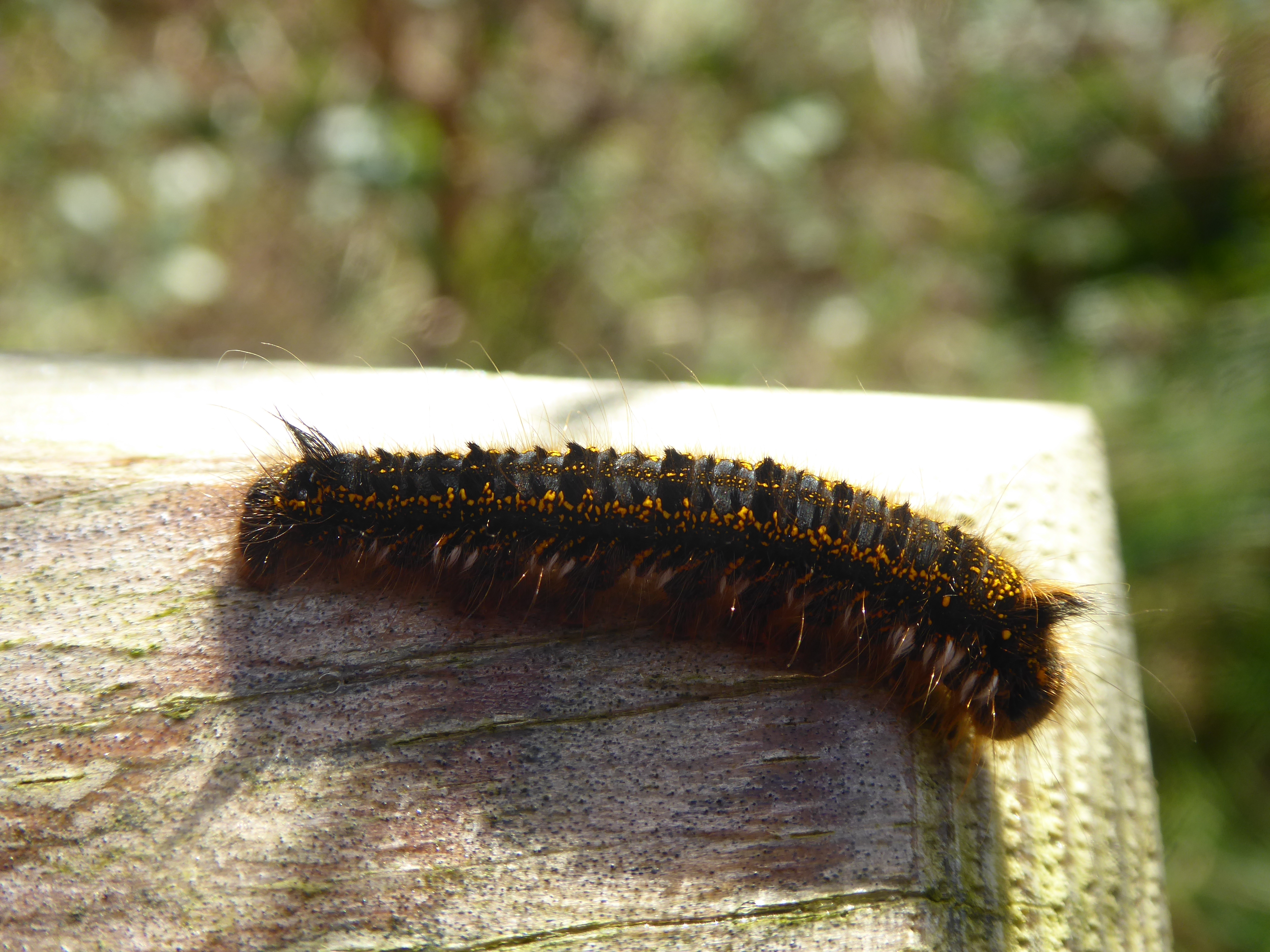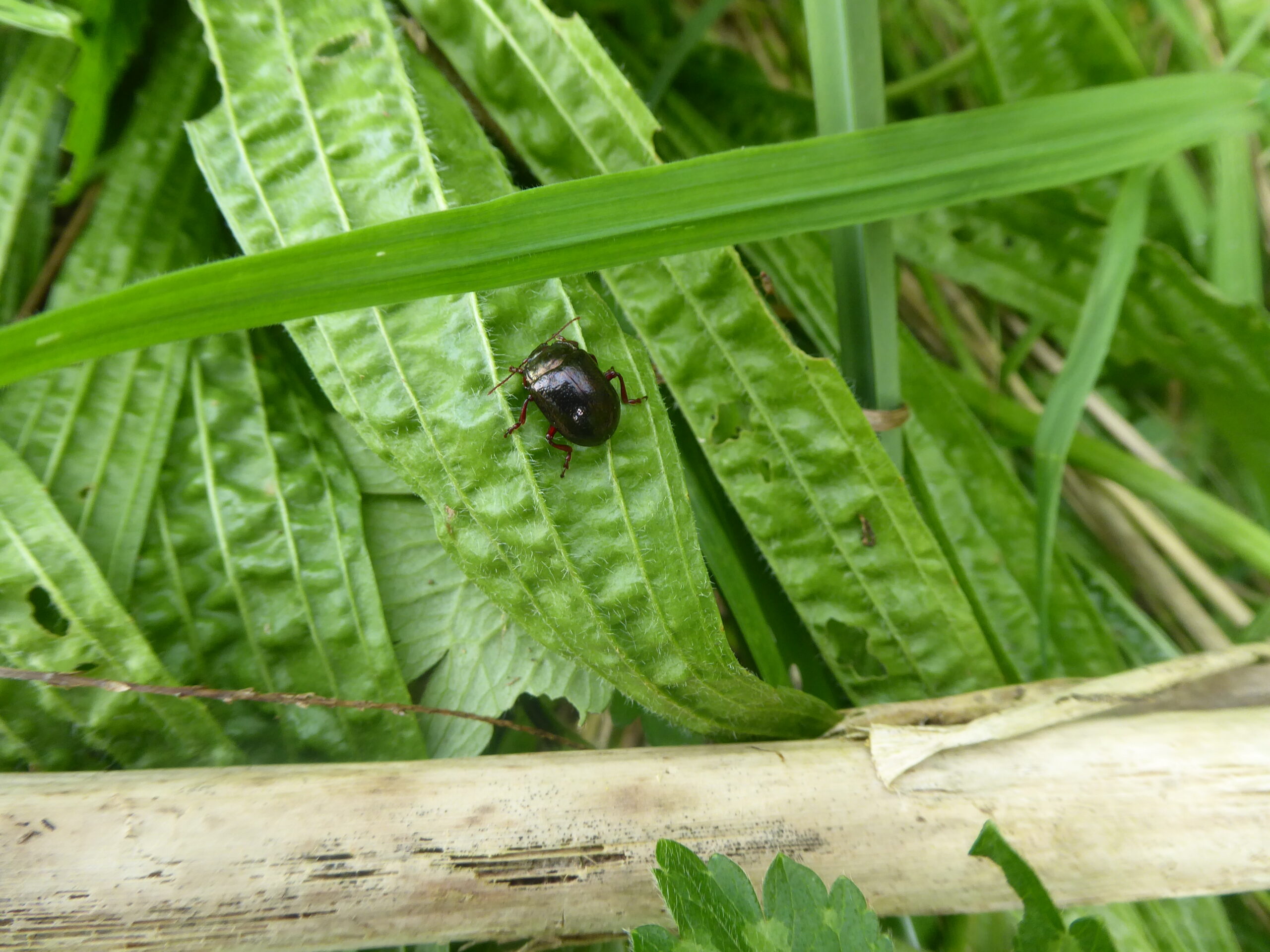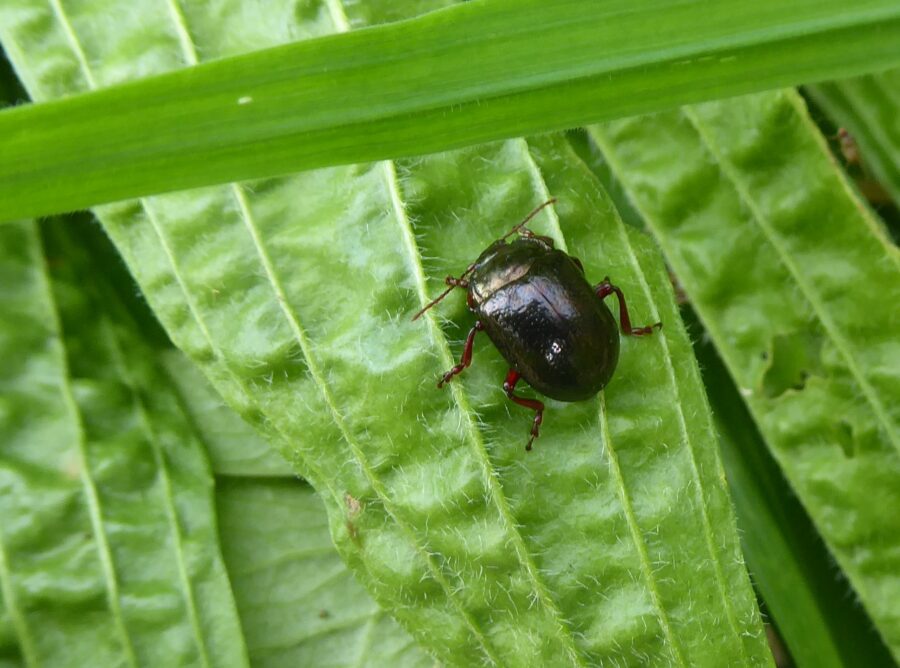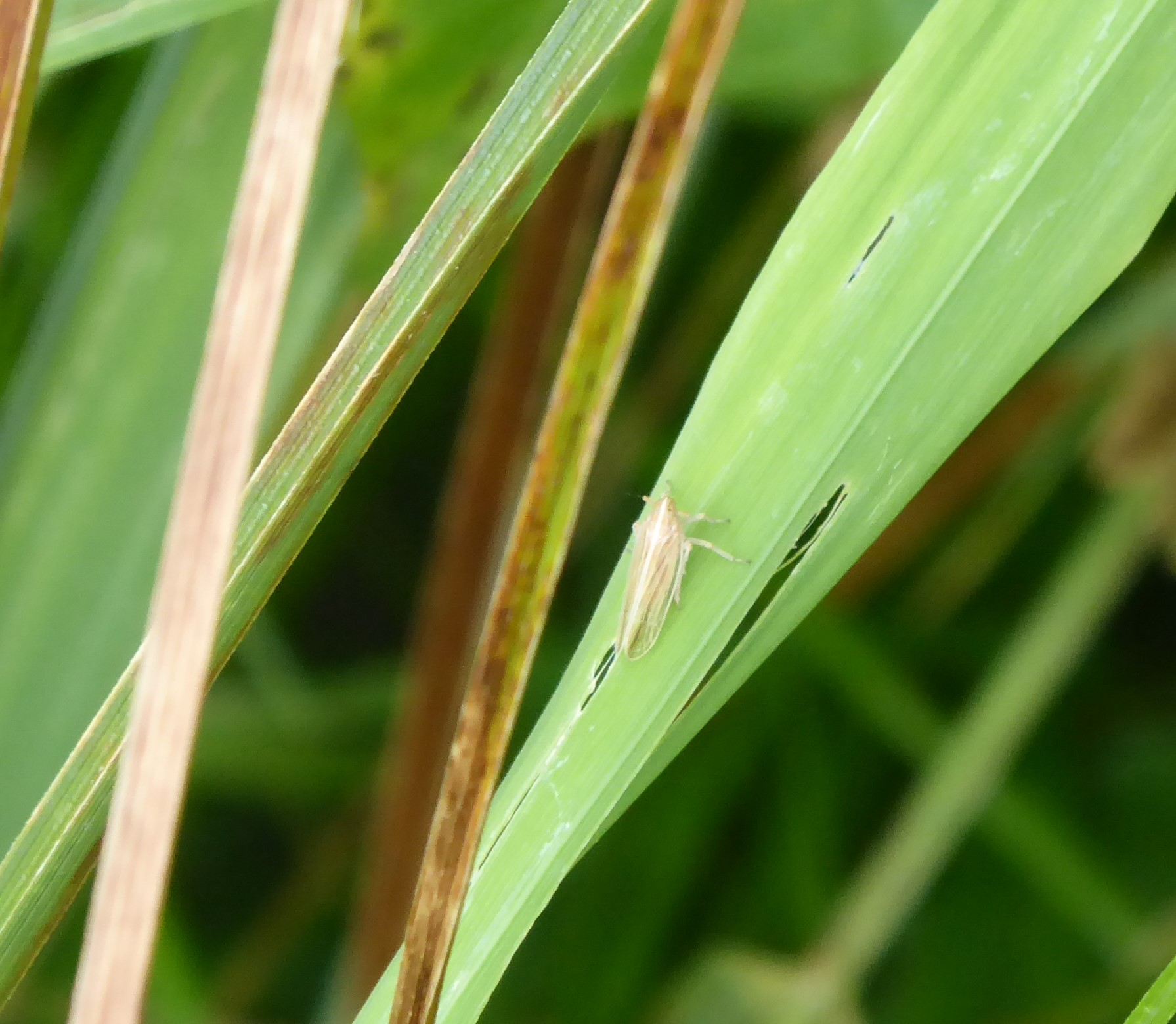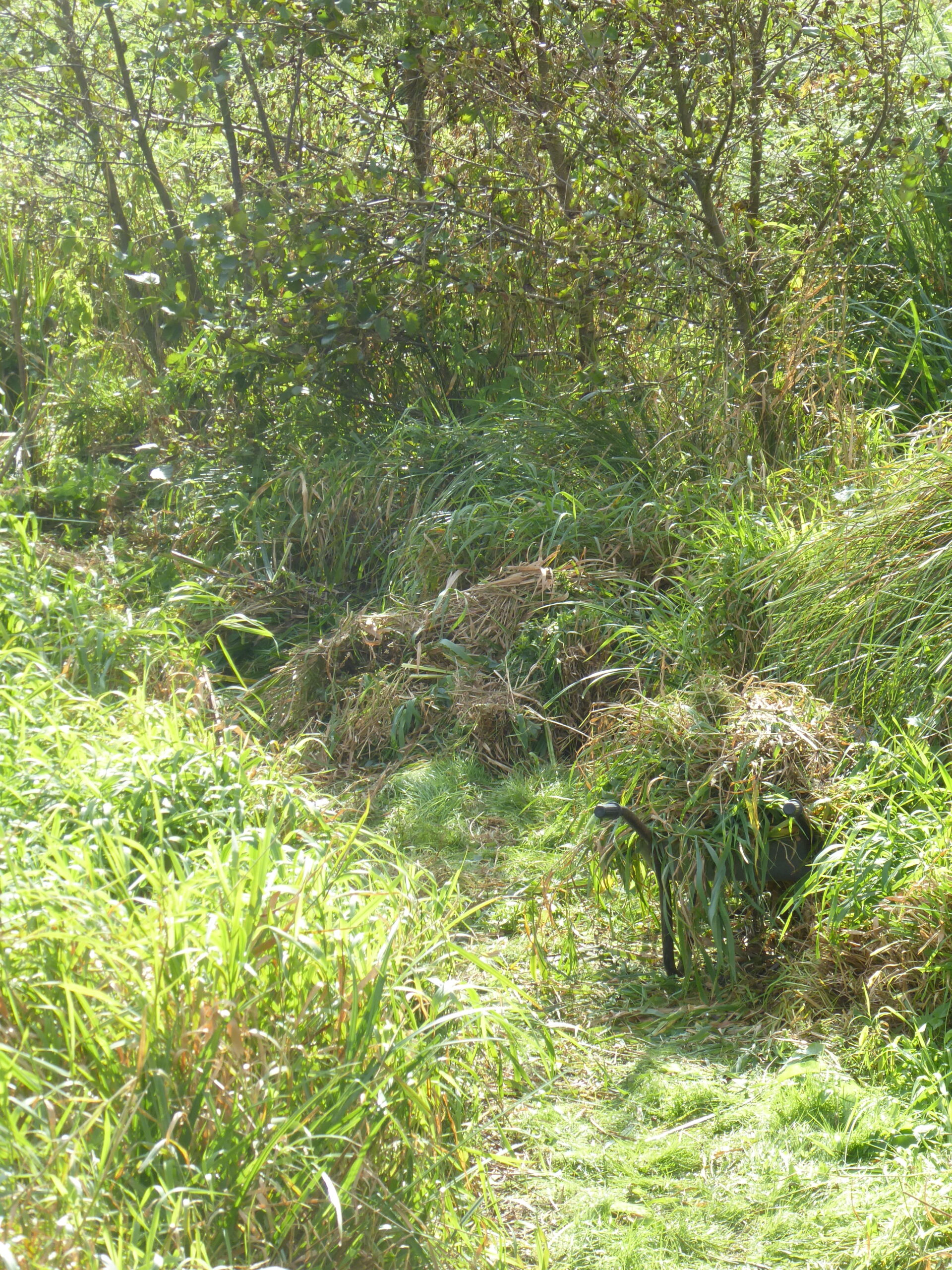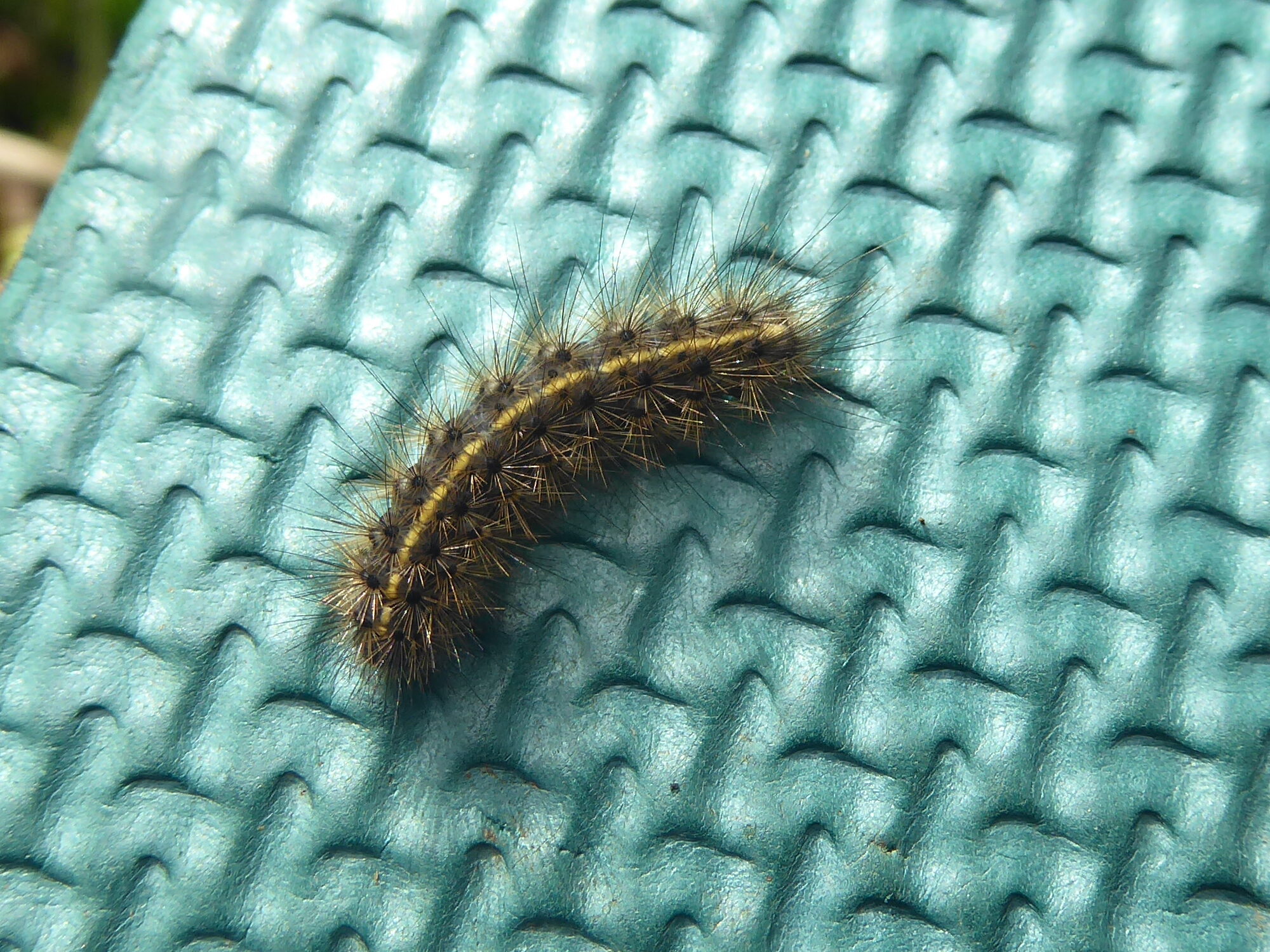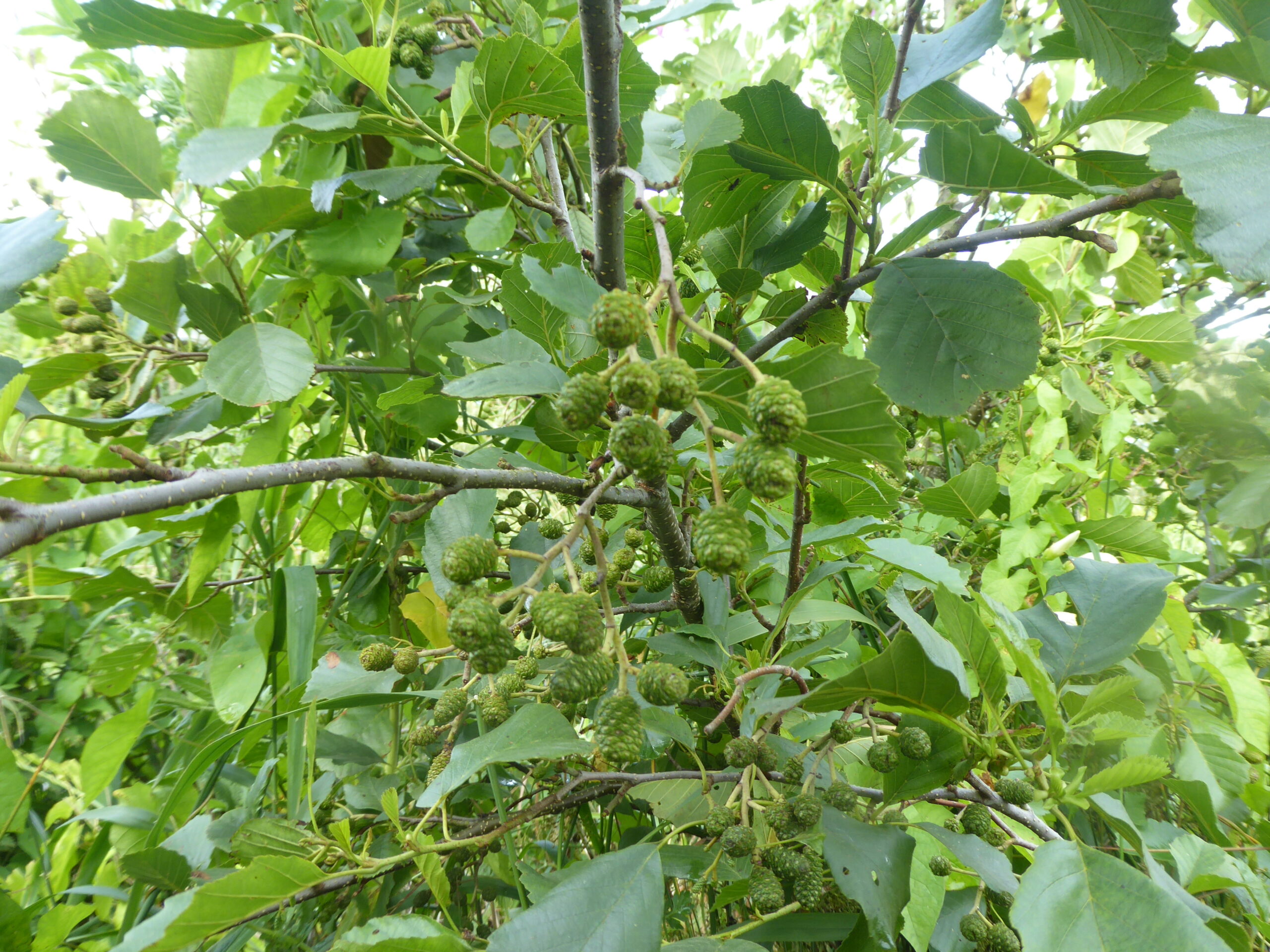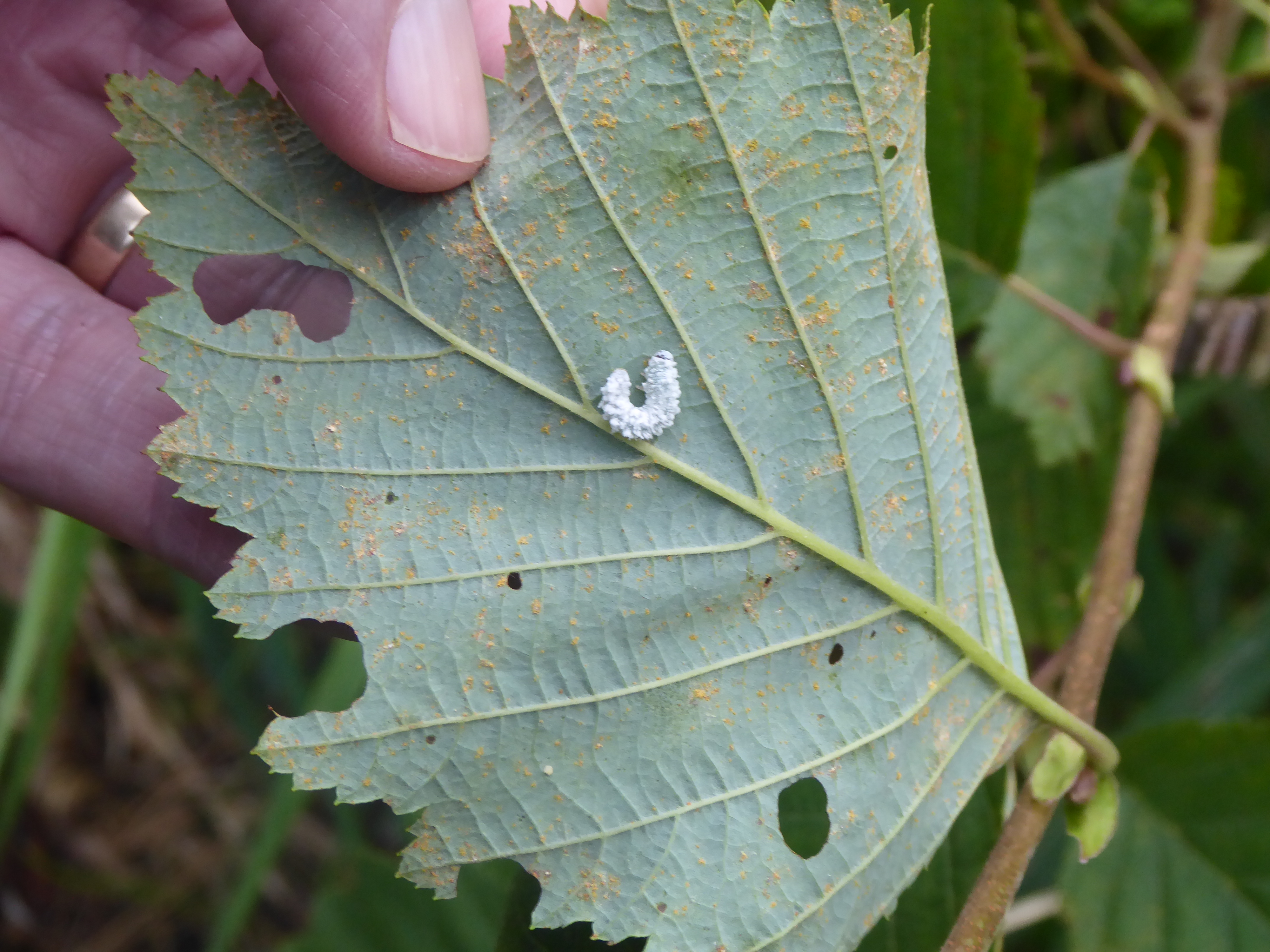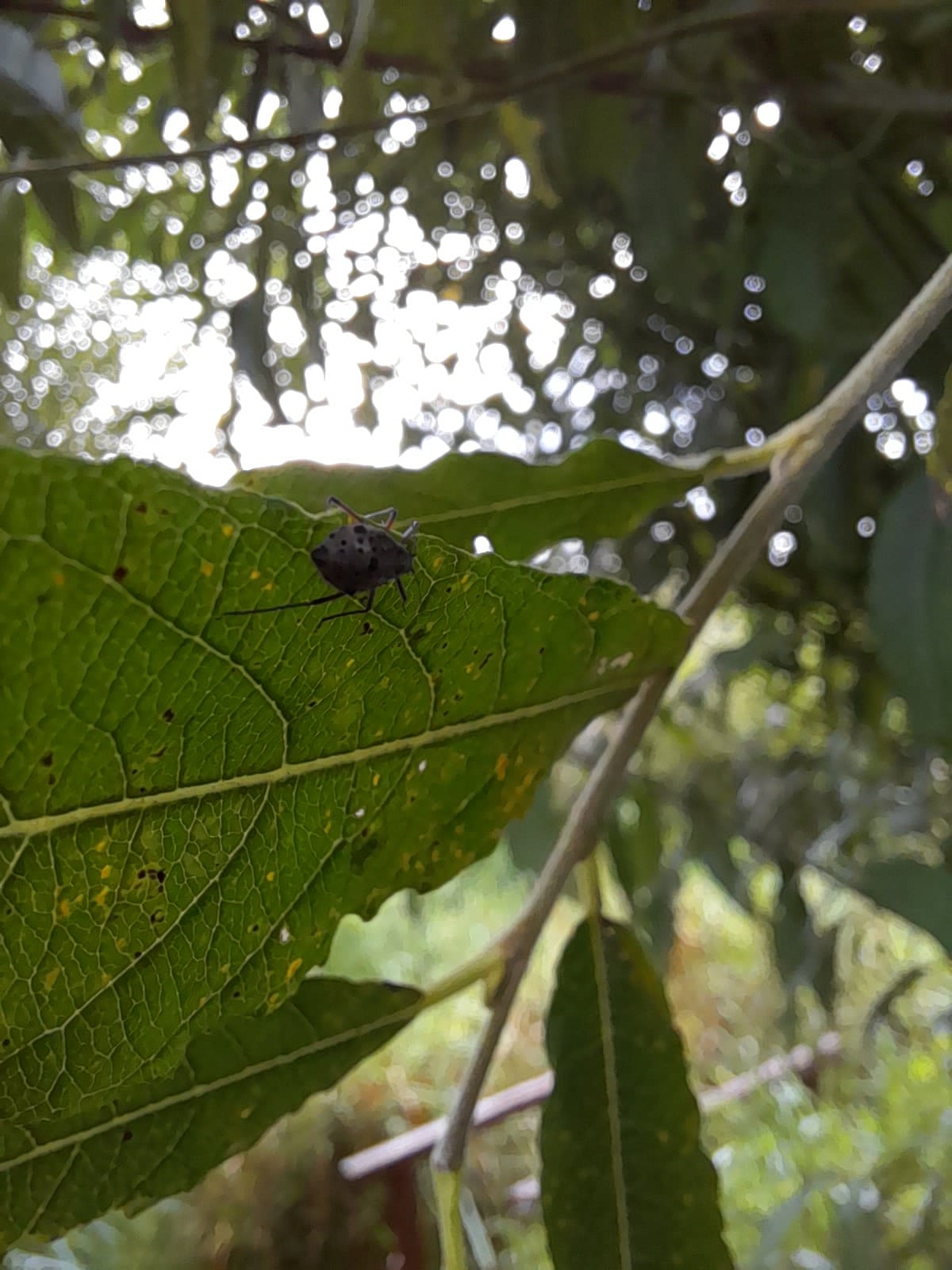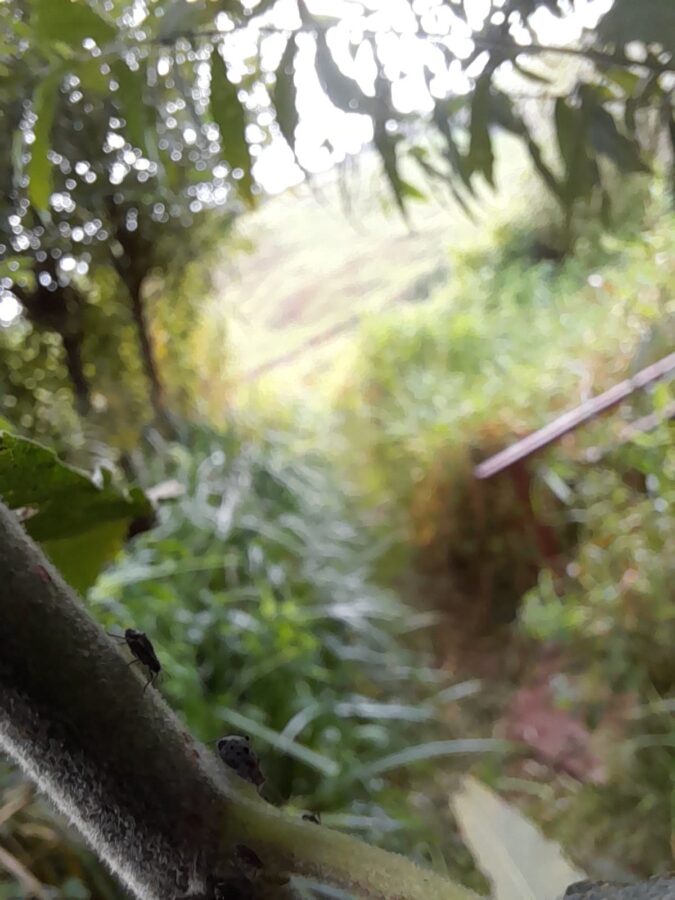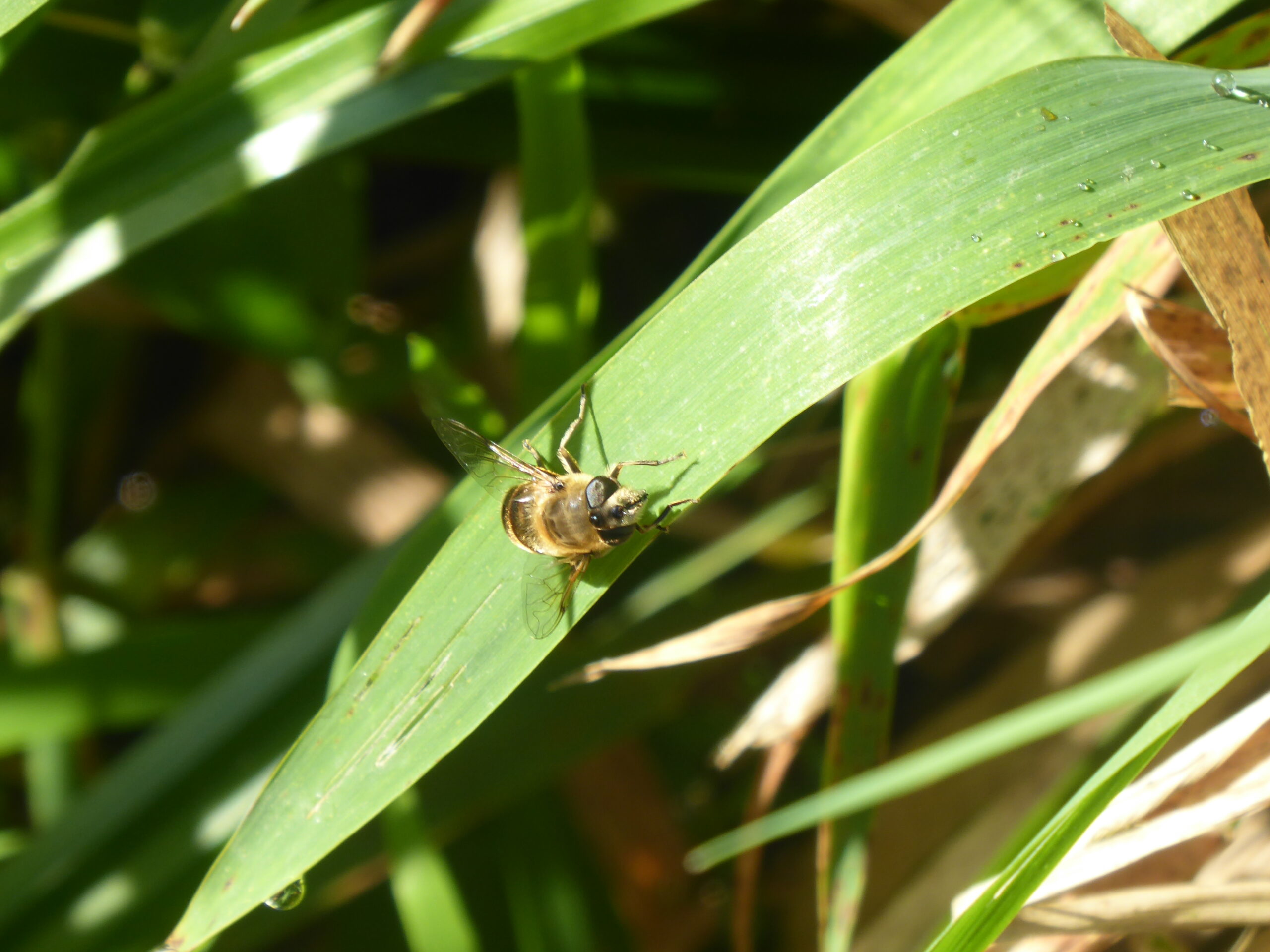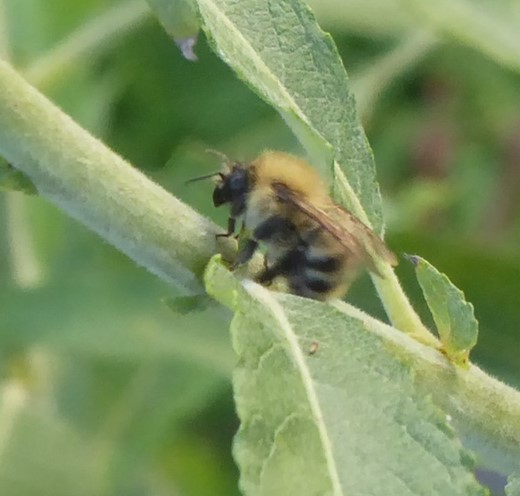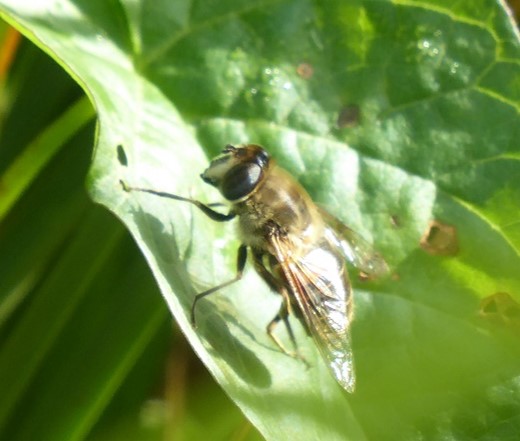Today is one of those grey, miserable, wet winter’s days. It’s mild-ish at 11°C (on the shed roof) but feels colder inside. Outside, the Egret pair have been flying around all morning – and yesterday I spotted the two herons flying back up the valley. Fingers crossed both pairs nest nearby – it’s looking more hopeful.
Whilst I haven’t spotted anything new for a few days, it was on Saturday that we were strolling home from posting a letter. Our local post-box comes with a sea view, so we’d lingered down at the cove getting a bit of fresh air. As we reached our front garden, we saw this stick-insect on our garden wall. Under my blog rules, I can’t count it as it isn’t in the watermeadow. However, I had to post the picture, as I was so excited to see it. We kept Indian stick-insects when the children were at primary school and there was a year when “everyone” was keeping them as pets. It was fun, apart from trying to clean out their jar without them escaping.
In Cornwall, stick-insects roam free. The two main types are the Prickly Stick-insect (Acanthoxyla geisovii) and the Unarmed Stick-insect (Acanthoxyla inermis). This is the first ‘wild’ stick-insect I have seen since we moved to Cornwall 4½ years ago. I wondered where it had come from, as there is no likely plants nearby to my knowledge.
I found out that they eat bramble. Mr C had been pulling up bramble from behind the house. Could it have been dislodged from there? The article I was reading encouraged me to report my sighting to Malcolm Lee of the Phasmid Study Group. (Phasmid is the order of insects which includes species that resemble leaves and sticks.) My sighting was noted and he kindly sent me lots of information about Naturalised stick-insects.
To start with the only reason I had spotted it was because it stood out so strikingly against the white background. Living on a plant, they are well-camouflaged looking like twigs. They travel very little and few live long enough to survive the winter. This one was identified as juvenile Unarmed Stick-insect. They usually lay eggs in the autumn, which simply drop to the ground below the plant and hatch the following spring. The tiny nymphs (first instar) are leaf green with a brown stripe down their back. They climb up into the nearest plant hoping it will be their food-plant. It most likely will be – and there they will stay – never moving further than a few dozen meters in their life.
To find out which plant it had come from, Malcolm gave me clear instructions as to when to look for the hatchlings, so from late-March to mid-April I will be looking for a spell of dry weather to go out with a torch at dusk, as that I when I am most likely to see numbers of the tiny insects feeding. We don’t have many plants in our front garden, so it is most likely to be from our roses or from a neighbour’s plants, as it turns out that they can eat a variety of plants including roses, bramble, raspberry, even conifers.
The roses were ordered from a well-known garden company and that’s another clue as the most common way for stick-insects to spread in the UK is as eggs in plant pot soil from nursery and garden centre plants. The first naturalised Unarmed Stick-insect recorded in the south-west was in Truro in 1979, but then it was discovered that Treseder’s nursery 100 metres away had, in fact, been home to them since the 1920’s, which just goes to show how compact their geographical range is left to their own devices.
